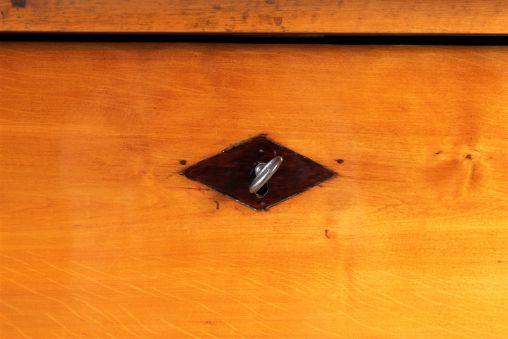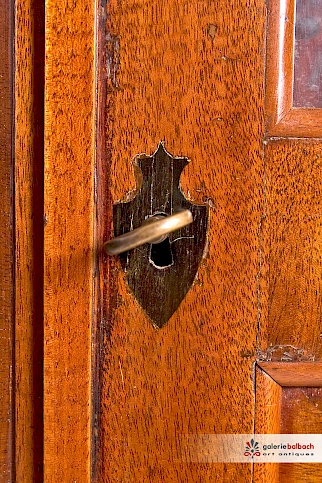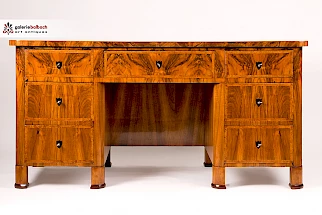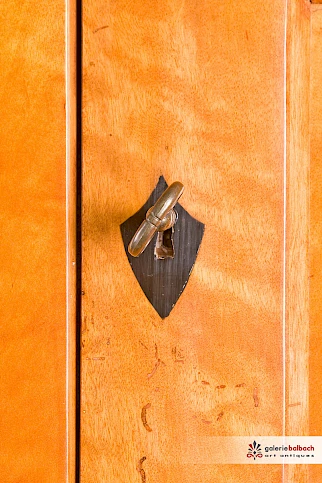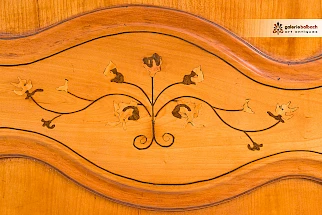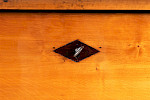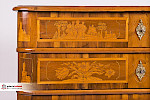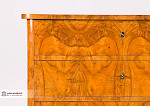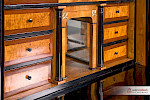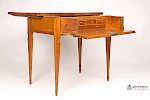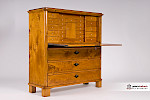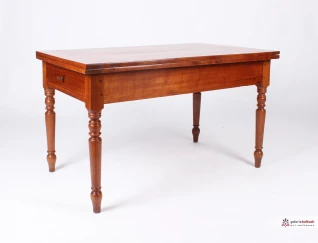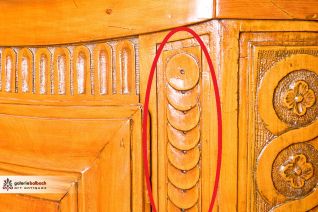Ebony
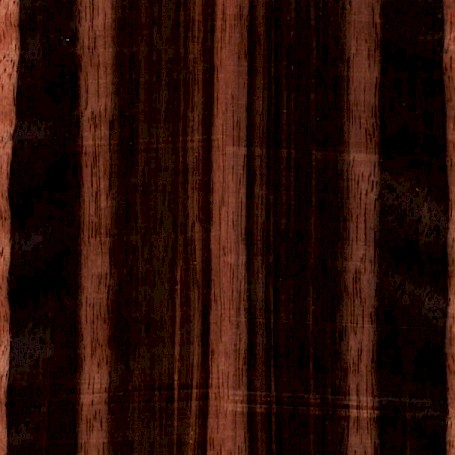
Botan. Botanicalname: Diospyros celebiea
Ebony is one of the most popular precious tropical woods we deal with in the art and antiques trade.
We find it, among other things, in expensive Renaissance cabinets, or as inlay wood in Baroque and Biedermeier furniture.
Genuine ebony or ebonised?
In the Biedermeier period, black ebony was used as a contrast to light woods such as cherry, birch or ash. It was used for key plates and thread inlays.
The wood was so popular as a contrast that other woods were dyed black to imitate the expensive precious wood. This technique is called ebonising.
Quality and origin
The wood is very hard and extremely heavy. It has a black to light grey-reddish structure. The darkest parts of the wood, which come from the core of the trunk, were particularly popular. Outside the core of the trunk, the wood is streaked with light veins, or is completely light in colour and therefore not sought after. Ebony is extremely fine-pored and very easy to polish.
There are different occurrences of ebony. The best-known wood today is the so-called Makassar, which owes its name to the original port of shipment in Indonesia. In the heyday of the wood in Europe, Ceylon ebony from Sri Lanka was the most widespread.
Ebony was very expensive due to its heavy weight and the long distance it travelled when imported into Europe.
The ebony used in the period when our furniture was made came from parts of Africa and Asia.
Also interesting
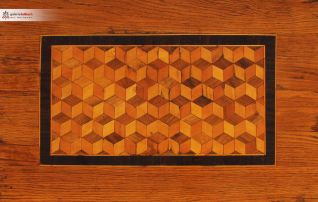
Würfelmarketerie
Cube marquetry is the term we use to describe inlay work that appears three-dimensional due to the arrangement [...]Read more
